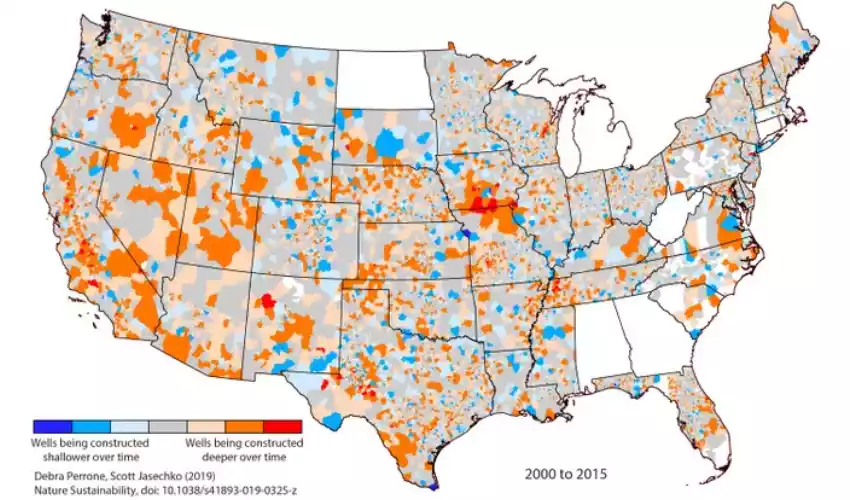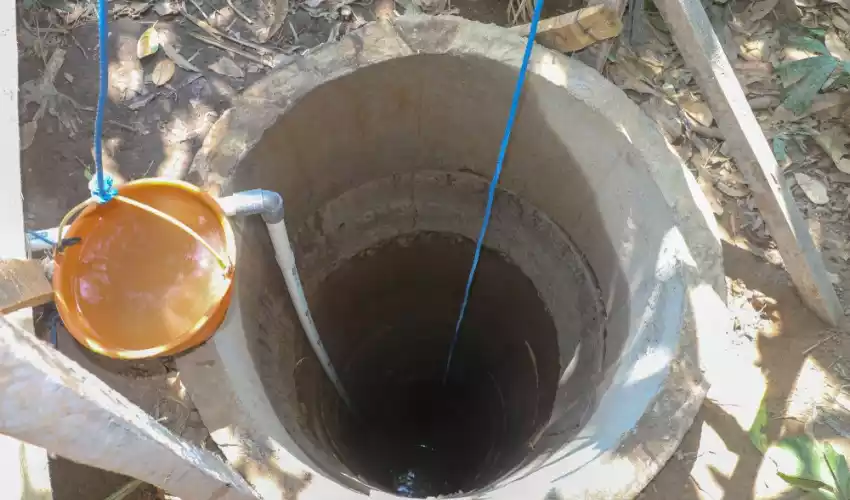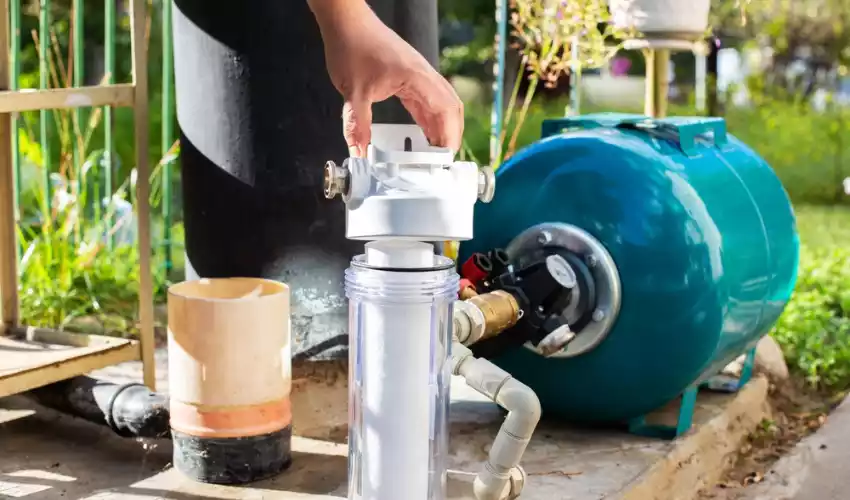The depth of a water well can be an intricate matter. It’s largely influenced by factors such as local geology, climate, and groundwater availability. The influence of these elements varies across the different states in the USA, leading to noticeable disparities in water well depths.
Water wells in the USA differ vastly in depth. This can range from 20 to 500 feet, with an average of around 100 feet. However, specific depths are subject to the state and its particular geological and environmental factors.
Consider the arid West, where wells often have to dig deeper to tap into reliable water sources. Compare this to the Northeast, where abundant rainfall and near-surface aquifers might result in shallower wells. It’s a diverse scenario, much like the United States itself.
Water Well Basics
Definition and Uses
A water well is a man-made structure created by drilling or digging into the earth’s crust to access groundwater in underground aquifers. These wells are a lifeline for millions of households in the USA, providing a primary source of potable water and irrigation supplies.
Types of Water Wells
Primarily, water wells in the USA are categorized into three types:
- Dug/Bored wells, typically shallower and larger in diameter
- Driven wells, shallow but smaller in diameter
- Drilled wells, which can reach considerable depths

Determinants of Water Well Depth
When drilling a water well, it’s crucial to understand the factors influencing its depth. The three primary considerations are groundwater availability, local geology, and climate factors. Each of these aspects varies greatly from one state to another, further influencing the depth and type of water wells.
Groundwater Availability
The amount and accessibility of groundwater in a region significantly determine the depth of water wells. In areas with abundant groundwater reserves, such as near rivers or in areas with high rainfall, wells may not need to be as deep. They can be relatively shallow and still provide a consistent water supply. However, in regions with sparse groundwater reserves, such as arid or semi-arid regions, the wells may need to be deeper to access sufficient water.
Local Geology
Local geology, including the composition and structure of the earth’s crust in a specific region, plays a vital role in deciding well depth. For instance, in regions with permeable rock formations or unconsolidated materials like sand and gravel, water may gather close to the surface, allowing for shallower wells. Conversely, in areas with impermeable rock formations, water may be found at greater depths, necessitating deeper wells. The geological aspect is also critical in determining the type of well suitable for a particular area.
Climate Factors
Climate factors, including annual precipitation, temperature, evaporation rates, and more, indirectly influence well depth by affecting groundwater recharge. In regions with high rainfall and lower evaporation rates, groundwater reserves can be easily replenished, allowing for the digging of shallow wells. In contrast, in arid regions where evaporation rates exceed rainfall, the groundwater recharge is significantly less, making deeper wells necessary to access reliable water sources.

State-wise Water Well Depths in USA
Water well depth varies significantly across the USA, given the country’s diverse climatic and geological factors. Here’s a look at the general well depth in various regions.
Well Depths in Northeastern States
The Northeastern states such as New York, Vermont, and Pennsylvania are characterized by a humid climate, receiving substantial precipitation throughout the year. Also, these regions have a rich water table due to their glaciated landscapes and permeable bedrock, resulting in the digging of relatively shallow wells. For instance, in Vermont, wells are often less than 100 feet deep.
Well Depths in Southeastern States
Despite receiving high rainfall, Southeastern states like Florida and Georgia often have deeper wells due to sandy soil and dispersed aquifers. The sandy soil allows rainwater to percolate quickly, dispersing the water over a large area and often leading to deeper aquifers. Wells in these states can range from 50 to 300 feet or more, depending on the specific location and local aquifer depth.
Well Depths in Midwest States
The Midwestern states, including Illinois, Iowa, and Nebraska, are known for their fertile soil and stable aquifers. These states typically have moderate-depth wells, often between 100 to 200 feet deep. The well depth can also be influenced by agricultural activities, as regions with extensive irrigation requirements might opt for deeper wells to access a reliable water supply.
Well Depths in Western States
The Western states like California, Nevada, and Arizona are characterized by arid to semi-arid climates. The annual precipitation in these regions is low, leading to a reduced rate of groundwater recharge. As a result, the water table in these regions tends to be lower, and wells need to be dug deeper to access water. In some parts of Nevada and California, wells over 500 feet deep are not uncommon.

Depth Variations and Rationales
Understanding the rationale behind well depth variations is crucial for efficient water management. Let’s delve into some specific factors driving well depth disparities in different regions.
Northeast: Geological and Climatic Factors
The Northeastern states, with their abundant rainfall and glaciated landscapes, provide a perfect setup for shallow wells. The area’s high precipitation levels, combined with its permeable bedrock, ensure a constant groundwater recharge, keeping the water table high. Consequently, wells in these regions don’t need to be as deep to access reliable water supplies.
Southeast: Water Table and Soil Type
Despite high rainfall levels, the Southeast’s sandy soil allows rainwater to percolate quickly and seep deep into the ground, resulting in deeper water tables and aquifers. In Florida, for example, the presence of karst formations further allows water to sink rapidly, contributing to the need for deeper wells.
Midwest: Aquifer Depth and Soil Composition
The Midwest, blessed with fertile soil, has numerous stable aquifers that serve as reliable water sources. However, these aquifers are often located deeper within the earth, requiring moderately deep wells to access them. The extensive agricultural activities in these states also influence well depth, with regions having high irrigation requirements often opting for deeper wells.
West: Climate and Groundwater Recharge Rates
The Western states, characterized by their arid climate and scarce rainfall, have a lower rate of groundwater recharge. The resulting deeper water tables require wells to be dug deeper to provide a reliable water supply. Furthermore, the high evaporation rates in these states can cause shallow wells to dry up, further necessitating the need for deeper wells.
Water Quality and Well Depth
The depth of a well can have implications for the quality of water drawn from it. This is due to the natural filtration process that occurs as water percolates through the soil and rock.
Deep Wells vs Shallow Wells: Quality Comparison
Deep wells often tap into confined aquifers, i.e., water-bearing formations bounded above and below by impermeable layers. Water in these confined aquifers is often of better quality as the overlying impermeable layer protects it from surface contamination. This contrasts with shallow wells which draw from unconfined aquifers. These wells are more susceptible to contamination from surface runoff.
Contaminant Risks by State
The risk of contamination in well water can also vary by state, often influenced by local land use. States with heavy agricultural activities, such as Nebraska and Iowa, might face higher risks of nitrate contamination from fertilizer runoff. Conversely, in states with significant industrial activities, wells may have more instances of heavy metal or synthetic organic compound pollution. Regular testing is recommended to ensure well water remains safe to use.
Legal Considerations for Well Drilling
Drilling a well involves navigating through a set of legal procedures and regulations that vary across states. These rules are intended to protect both the environment and the rights of individuals and communities.
State Regulations on Well Depth
Each state has its regulations regarding well depth and construction. For instance, some states may specify minimum well depths to avoid potential contamination, while others might limit how deep a well can be to protect aquifers and preserve water supplies. Knowledge of these regulations is critical for any well drilling operation.
Permit Requirements and Inspection
Before drilling a well, it’s often necessary to secure a permit from local or state authorities. The permit process typically involves submitting a plan detailing the proposed well’s location, depth, and construction method. Following the completion of drilling, inspections may be carried out to ensure the well adheres to state regulations and safety standards.
Frequently Asked Questions
Why do water well depths vary between states?
The variation in water well depths across states results from differing geological, climatic, and environmental factors.
How does well depth impact water quality?
Generally, deeper wells tap into confined aquifers, leading to better water quality by reducing the risk of contamination from surface pollutants.
What are the legal aspects of drilling a well?
Legal aspects can include obtaining the necessary permits, adhering to state regulations regarding well depth, and ensuring compliance with safety and environmental standards.
Conclusion
The depth of a water well isn’t a random pick. It’s a complex calculation involving various geological, climatic, and legal considerations. From the arid climate in the West to the glaciated landscapes in the Northeast, these factors are as diverse as the country itself.
Water wells remain an essential water supply source for many US households. Understanding the variances in well depths across states can offer a lens into America’s groundwater resources and the environmental factors at play.
As society becomes more water-conscious, such information can guide sustainable water management practices. After all, ensuring access to clean, reliable water is a shared goal across all states – regardless of how deep we need to dig.